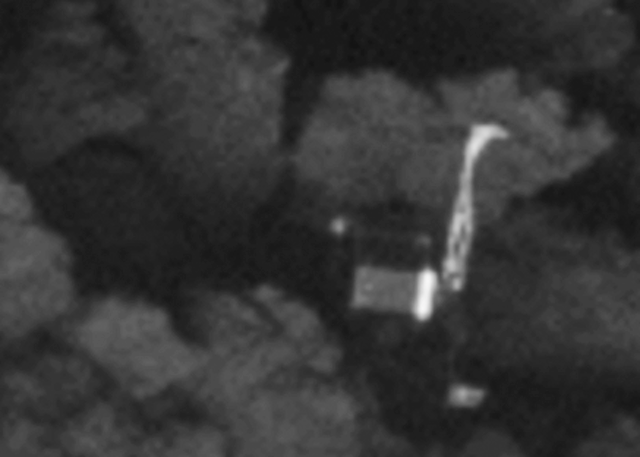Found: Philae’s Final Resting Place
The lander on Comet 67P was finally located.

The last photograph of Philae. (Photo: ESA)
In November of 2014, the Philae lander touched ground on Comet 67P and became the first object made by humans ever to land on a comet.
Then, it bounced.
Philae was supposed to shoot out harpoons to anchor it to the comet’s surface, but they did not deploy properly. Philae bumped along, and the place it ended up was not ideal. The lander ended in a shady spot, which meant it couldn’t draw more power from the sun. For three days, it sent back data to earth, until its batteries ran out.
Where exactly Philae stopped, though, was a mystery. Scientists at the European Space Agency have been working for more than a year to pinpoint its exact location, and time was running short: in a month, Rosetta will draw its orbit closer to Comet 67P, until it collides with the comet’s surface.
Finally, though, the scientists found Philae. Rosetta, the spacecraft still orbiting the comet, photographed the lander, caught in a dark crack in an area named Abydos. With this information, scientists have more context for the data that Philae collected while it was running, and the reassurance of knowing exactly where their intrepid probe laid its metal body down to rest.
Every day, we highlight one newly found object, curiosity or wonder. Discover something amazing? Tell us about it! Send your finds to sarah.laskow@atlasobscura.com.











Follow us on Twitter to get the latest on the world's hidden wonders.
Like us on Facebook to get the latest on the world's hidden wonders.
Follow us on Twitter Like us on Facebook